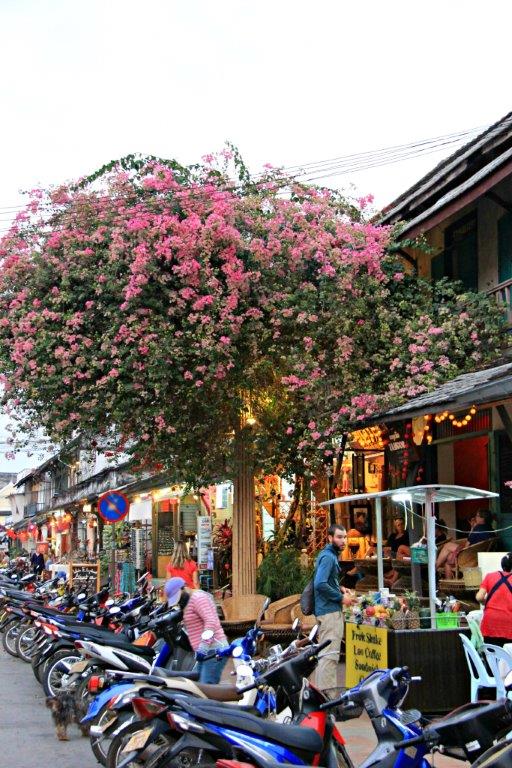 As we arrive in Luang Prabang, Laos after a full two day journey down the Mekong River, we are feeling very relaxed. I have to say I am very happy we had another reservation after Luang Prabang or I think I might still be there. Luang Prabang is that type of place, one you may never want to leave.
As we arrive in Luang Prabang, Laos after a full two day journey down the Mekong River, we are feeling very relaxed. I have to say I am very happy we had another reservation after Luang Prabang or I think I might still be there. Luang Prabang is that type of place, one you may never want to leave.
As the best preserved town in Laos, Luang Prabang is a UNESCO World Heritage site. It was the capital of the Kingdom of Laos from 14th century to 1975. Yes, it does cater to tourists a bit, but it also has a lot going for it all on its own. Laos was a French protectorate from 1893-1953 and you will find French influences in the food and architecture. And the combination of old and new, great cuisine and the Buddhist culture makes for a very peaceful town with a very relaxing vibe.
There are plenty of things to do in Luang Prabang. So where to start? Here are our recommendations for how to pass the time in Luang Prabang. You can reach most places around town on foot or by bicycle (most Luang Prabang hotels have bikes available).
Day 1: Exploring Luang Prabang
Make the most of your first day and choose from some of these memorable Luang Prabang attractions.
Morning Alms Procession
Watching this procession requires an early start, but it’s definitely worth it. At sunrise each morning the monks walk through the streets of Luang Prabang receiving alms. A Buddhist religious ceremony, the locals pay their respects and offer gifts of food to the monks receiving a blessing for the day in return. It is considered good karma.
You will see monks of all ages. Like many Buddhist cultures, men are encouraged to spend some time as a monk. Requiring no set period of time for service, monks can come and go as they please.
The monks receive their daily food during alms. Locals prepare rice and other simple foods for the monks. (To a monk eating is for sustenance not pleasure.)
Traditional Arts & Ethnology Centre
One of the most ethnically diverse countries in the world Laos has over 49 recognized, ethnic groups.The Traditional Arts and Ethnology Centre features traditional clothing, housing, handicrafts, religious artifacts, art work, customs and household items of some of the 49 ethnic tribes in Laos.
The museum is very well done and quite worthwhile to visit. It has objects, photos, videos and music woven together to bring some of these tribes and their customs to life. It is a non-profit organization which also does some research and documentation work.
A shop and cafe are also on the premises. An admission fee is charged and it is closed Mondays.
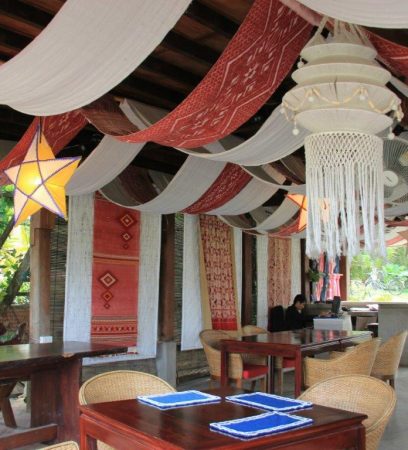 |
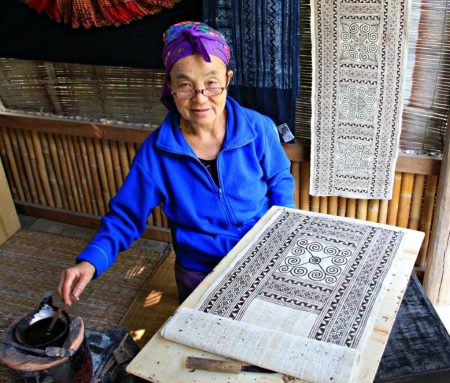 |
Ock Pop Tok
Grab a bike and head to Ock Pop Tok (East Meets West) to learn about weaving and batik in Laos. The center focuses on preserving traditional handicrafts and allowing women to make a living wage through these skills.
Take a quick tour where they explain the operations. How they set up the weaving looms, set the pattern and then actually weave the final product is very interesting to see first hand. Everything is natural with cottons and silks used and all natural and traditional dyes. Bamboo weaving is also used for fish traps, baskets and traditional hats.
Demonstrations show how the Hmong create their intricate batik on their indigo fabrics. Hemp is the traditional material. One you see the process, and how labor intensive and intricate it is to create their traditional skirt, you can appreciate how it take 5-6 months to make just one.
The patterns and motifs on the handicrafts vary by ethnic group. With the patterns passed down from one generation to the next maintaining the traditions.
Ock Pop Tok runs a program of village weavers where women remain in their traditional villages making handicrafts and then sell their finished goods through the Ock Pop Tok shop. Materials, training, support and expertise are provided to the villagers to ensure they have the skills and materials to produce high quality goods that can be sold and provide them enough income to support their families.
The program works at many levels starting with farmers for the raw materials for the fabrics and dyes. There are also processors who spin and dye the materials, designers, and the artisans creating the final products.
If you want to learn more or try your hand at weaving, dying, bamboo weaving and batik classes are available. There is also accommodation at the Living Crafts Centre.
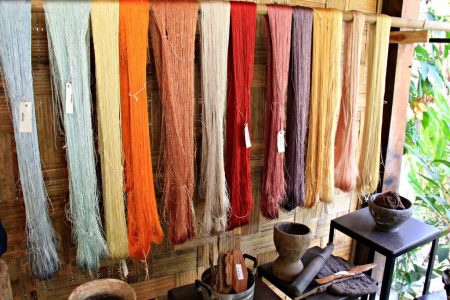 |
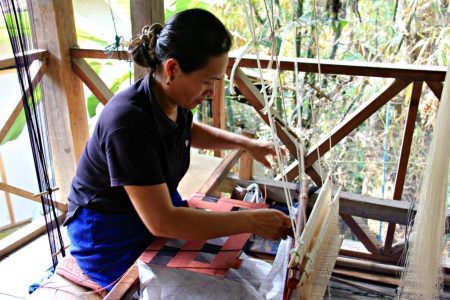 |
Sunset Cruise on the Nam Khan River
Having seen sunrise at the alms procession, a perfect way to end the day is a sunset cruise up the Nam Khan River. This is a great way to enjoy the scenery and see the monks having an evening swim or the local fisherman fishing on the river with nets in their flat canoes. Our cruise made a stop after sunset on the way back to town to see a demonstration of local dancing as well.
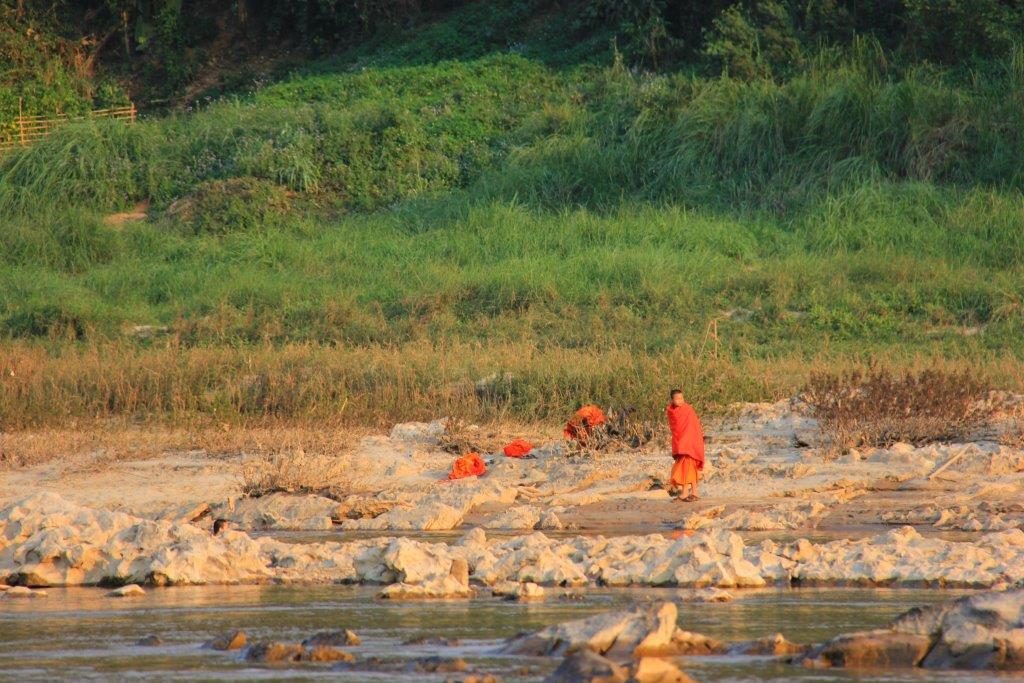
Night Markets
Once back in town, head for the Night Markets. The market is held every evening from 5-10 pm, right outside the main temple complex. You can find traditional handicrafts from some of the diverse ethnic groups in Laos; Hmong, Tai Lao, Tai Dam, Akha, Kmhmu and many other are represented. Bargaining is essential!
You can look for the Luang Prabang Handmade symbol to denote traditional handicrafts.
Day 2: Learning about Culture and History of Laos
Some of the other enjoyable things to do in Laos include a day spent visiting the culture and landmarks to learn the history of the country.
Royal Palace Museum and the Royal Barge House
An excellent spot to learn about the history, culture and customs of Laos is the Royal Palace Museum. Tracing the history of Laos over several centuries starting with the Lang Xang kingdom, through French colonial rule and on to the present day through a series of rooms and exhibits. The building was originally the residence of the king and the architecture shows both French and Lao influences.
Viewing the royal apartments, seeing the crown jewels, and an opportunity to inspect the car collection of the last king provide an insight to the lifestyle of the Royal family. The pavilion which you pass on the right as you approach the museum houses the 2,000 year-old, 83-centimetre Prabang Buddha, which is made from solid gold.
The same ticket covers visiting the Royal Barge House which is on the same grounds. A note for visitors- no shoes or cameras allowed (you leave them in lockers after you buy your ticket.) Conservative dress required (no shorts or short skirts).
The museum does get quite busy (and warm). It is closed daily from 11:30-13:30, and the museum is closed on Tuesday.
The National Theatre is on the same grounds and there are drama and dance performances held regularly. If you have the opportunity to go, we highly recommend it. The costumes, music and movements of the dancers as they tell their traditional stories is mesmerizing. The theater is not air conditioned. Shows were on Monday, Wednesday and Saturday when we visited. You can buy a ticket on the day; we purchased tickets when we visited the museum in the morning.
 |
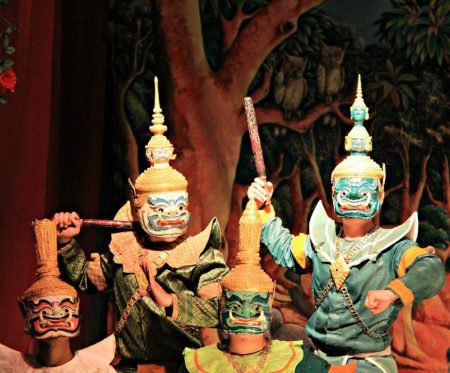 |
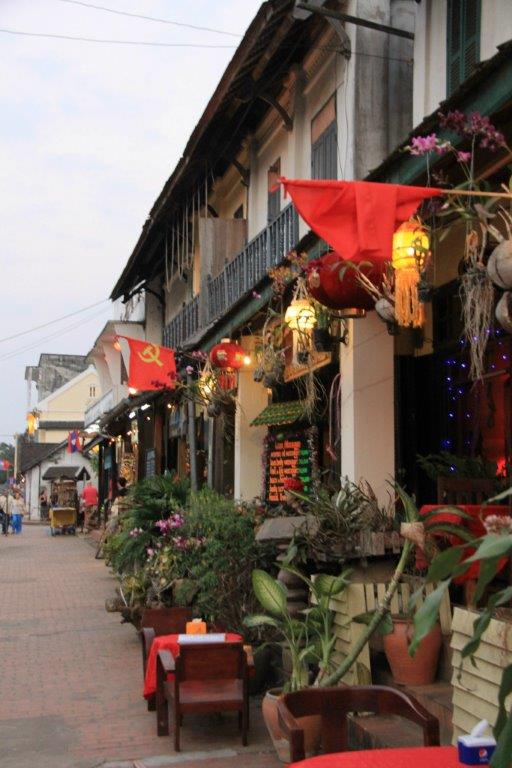 Wat Xieng Thong
Wat Xieng Thong
Wat Xieng Thong is one of the most important Luang Prabang temples in and an excellent example of the typical Laos architecture used for temples. Located at one end of town near where the Mekong River joins the Nam Khan River, the temple grounds offer a peaceful escape and some nice views.
Wandering around the site is encouraged. Be sure to find the tree of life mosaic and the intricately carved walls which are hallmarks of a Laos temple.
If this is your vist visit to a temple, please review proper etiquette for temple visitors in this post.
UXO Laos Visitor Center
Laos was the country most heavily bombed during the Vietnam War, despite the fact it was never actually in the war. As planes would return from bombing runs over Vietnam they could not land with bombs (ordinances) on board the plane, so these were dropped over Laos so they could land. Many did explode, and many did not.
This legacy of land mines, especially those unexploded, has created a lot of problems for Laos. It deters economic development as it is difficult to clear land. And it severely injures many who find or attempt to move these mines.
If you have an opportunity to visit either the C.O.P.E. Centre in Vientiane or the UXO (Unexploded Ordinance) Centre in Luang Prabang it is highly recommended. It’s an opportunity to learn not only the history which has created the issue but also the continuing efforts to clear the unexploded mines.
Day 3: Learning about Lao Cuisine
What to do in Luang Prabang once you’ve explored the history and culture? Indulge in the delicious local cuisine!
Learn about Lao Cuisine in a Cooking Class
A great way to learn about the local culture is through the food. Lao food is a cuisine you don’t see very often and therefore people tend to know little about. Luang Prabang is the perfect place to take a cooking class and there are several options, most offered by local restaurants.
We took an all day cooking class through Tamarind. It was an excellent class. Each student is given a cooking station and makes each dish. Cooking is over hot coals in the traditional Lao manner. The day starts with a trip to the local market where you can see and learn about the local ingredients you are going to use for the day.
Throughout the course of the day you make 5 different dishes. The class ends with a meal where you eat your creations from the day.
The class itself is held outside of town at a lovely lakeside pavilion with fantastic gardens. Of all the cooking schools we attended in Southeast Asia, this one had the best ambiance! (And several of the other ones were very good so we are giving this one a very high rating indeed.)
You need to book well in advance. We recommend you book before you arrive in Luang Prabang.
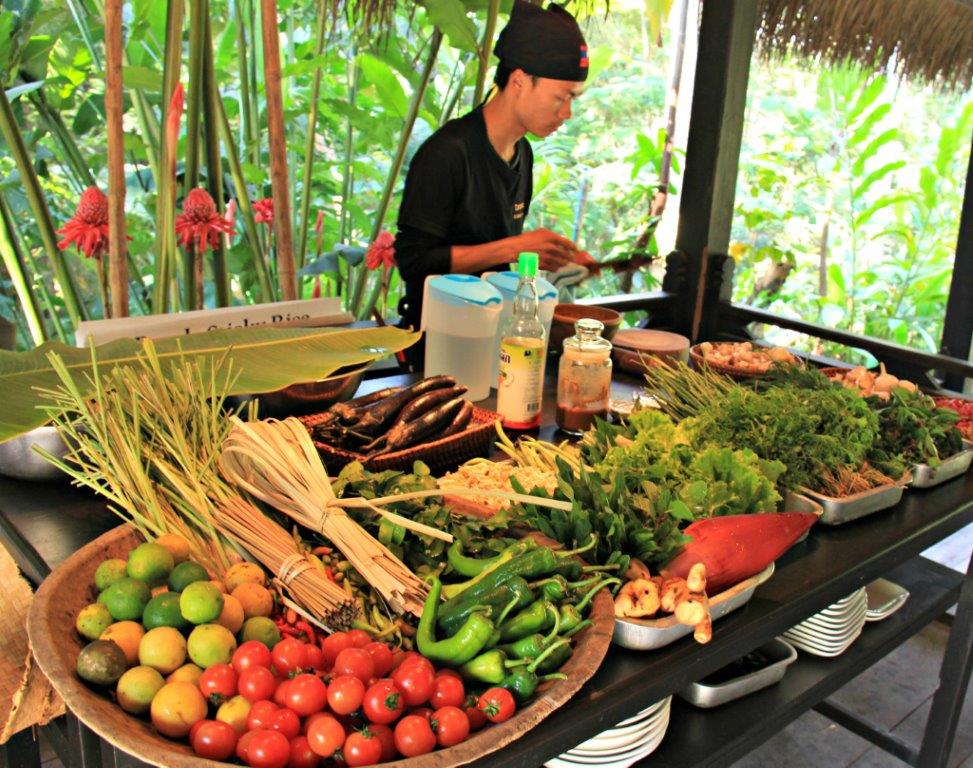
Climb Phou Si Hill
For a great view of Luang Prabang and the surrounding hills, climb the over 300 steps up Phou Si Hill. You can also visit the Phou Si Stupa which is at the top. This is extremely popular at sunset and it is understandable why- the views are amazing. If you want a prime position you need to go early.
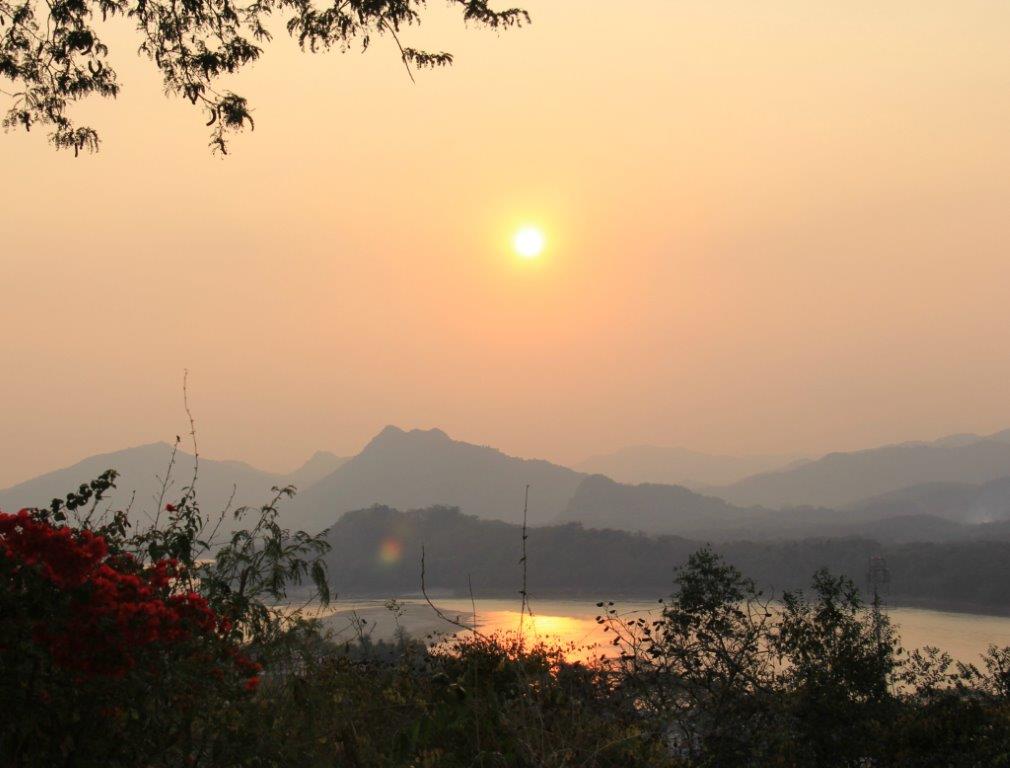
Extensions: Day 4 or Longer
Yes, you can spend longer in Luang Prabang, easily. There are several things to do outside of town including visiting the local Luang Prabang waterfalls, the Pak Ou Caves (if you didn’t stop on the way down the river on the slow boat) and it is possible to visit nearby local villages.
There is also a golf course, as well as several spas in town and you can always spend a day or two just relaxing.
We had a few unplanned days in our schedule and I wasn’t sure if we should stay in Luang Prabang or if we should spend them in Vientiane. We stayed in Luang Prabang and honestly if we didn’t have a booking in Vientiane, I would have probably stayed in Luang Prabang even longer!
Check out our recipes from Laos for suggestions on where to eat and drink in town and to learn more about Lao cuisine. Luang Prabang has some lovely places for a before dinner drink. Just grab a seat and watch the world go by!
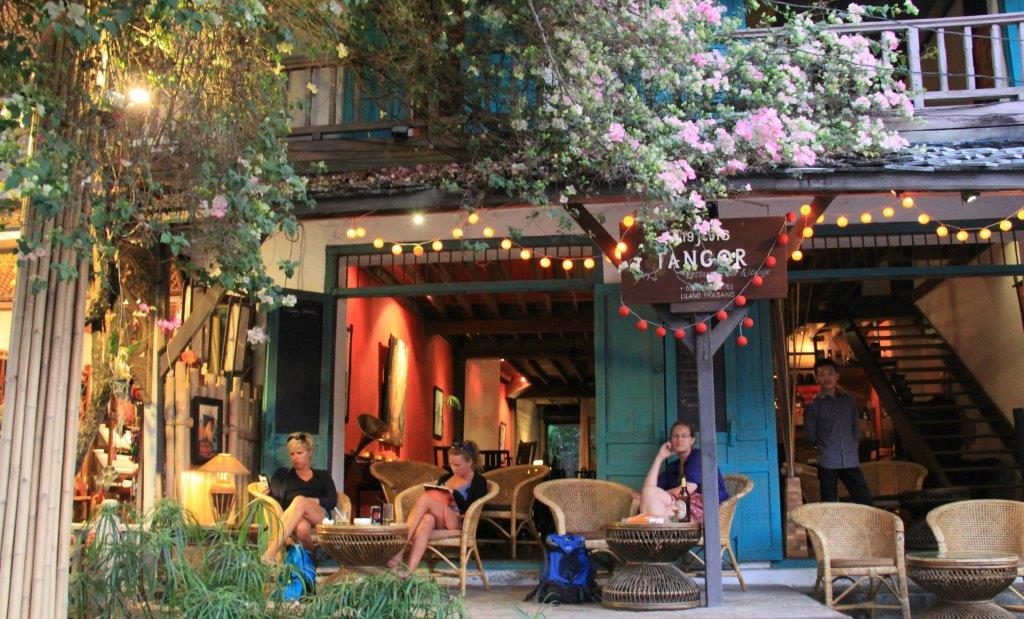
If You Go to Luang Prabang
Lao Airlines and Bangkok Airlines fly from both Bangkok and Chiang Mai to Luang Prabang. Flights are also available from Hanoi (Vietnam). A 30 day visa is issued when you arrive at the airport or via land.
You can also arrive via road from Vientiane and the Northern Laos Provinces. Road travel throughout Laos is slow. The country is very mountainous.
It is also possible (and recommended) to take the slow boat from Huay Xai near the Thai border (or from Luang Prabang to Huay Xai).

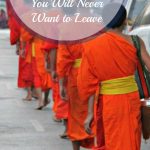
Leave a Reply